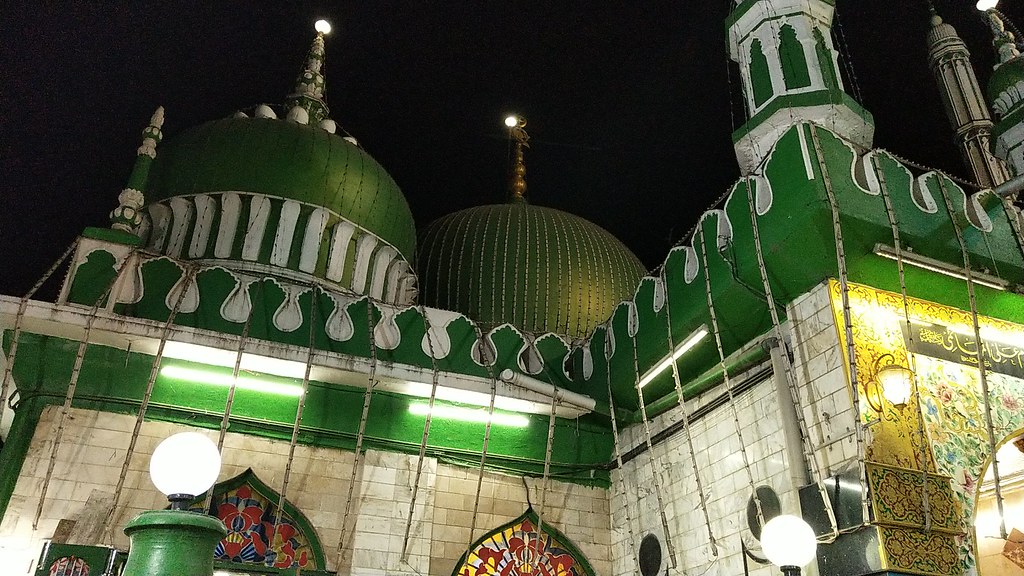
As the residents of Mahim gear up for the annual 10-day mela held in honour of Sufi saint Makhdoom Mahimi entombed at the Mahim Dargah, the Mahim Police is the first to pay obeisance at the Dargah by offering the first “chaadar/sandal chadhaava” honouring a tradition which started almost a hundred years ago. The precedent was set by a 1911 Gazette that mandated police officers of the area to offer the first Chaadar/sandal (decorative cloth covering for tomb) at the 10-day festival. According to local residents, Mahimi has been the patron saint of the Mumbai police since the 15th century.
Makhdoom Ali Mahimi Shafi’i (1372–1431 A.D) was a saint and scholar of international repute. He lived during the time of the Tuglaq dynasty and that of Sultan Ahmed Shah of Gujarat, and was married to the Sultan’s sister. He is widely acknowledged for his scholarly treatises, liberal views and humanitarian ideals. He was born into a family of Arab travellers from Iraq who settled down on the island of Mahim (which is one of the seven islands which later combined to form the present city of Mumbai). He was later appointed the Qazi (Head Muslim cleric) by the Sultan of Gujarat.
Mahimi was the first Indian scholar to write a critical explanation/commentary of the Qur’an called ‘Tafsirur Rahman’, in addition to writing over 100 books of which only a small number are available in libraries today. Mahimi is said to have been a man of great intelligence and sound legal knowledge who would often offer consultation to the local police in solving cases in the 15th Century. He was revered by both Muslims and Hindus during his lifetime and was buried in Mahim after his death in 1431. The burial site became the holy Mahim Dargah where devotees from all over the country come to offer prayers regardless of their religion.
The mela which started on December 8th this year, marks the death anniversary or Urs of Makhdoom Ali Mahimi. The Mahim police station, about 200 metres away from the dargah, was built in 1923 on the site where Mahimi is said to have lived. A green steel cupboard in the Senior Inspector’s room is said to contain some of the saint’s possessions. During the ten days of the fair held each year to honour Mahimi, the office is thrown open for devotees.
“The full Mumbai police follows Makhdumi Baba,” said Basheer Baba, 55, who is among the dargah officials overseeing the festivities. “Nobody can break that bond. There should be more chances like this of Hindu-Muslim love.”
In true Mumbai fashion, the processions and devotees flow towards the Dargah while speakers blare out loud music. Noise Pollution activists and local residents, including the Dargah committee, have made appeals to keep the noise levels to the permissible 55 decibels during the day and 45 decibels during the night. The security arrangements include 120 volunteers alongwith officers from police, railway, traffic police and BMC, and 40 CCTV cameras.
While Muslims comprise only around 2% of the police force in Mumbai, it is heartening that they revere Makhdoom Ali Mahimi and have kept up the hundreds of years of tradition at the Urs mela at Mahim Dargah.
The question of Muslim under-representation in the police force lingers. According to the National Crime Records Bureau (NCRB) figures of 2013, there are about 1% Muslims in the Maharashtra police against the national average of 4%. The police is meant to be the first step of outreach for citizens, and it can also be the first barrier. The gender/religion/caste- compositions do matter in determining accessibility and sensitivity.
Whether the faith of Mumbai police in the Mahim Dargah translates into their sensitivity to handle communally charged situations, or if it promotes internal camaraderie- may not be clear, but what is clear- is that an example is set for the people to see and follow. To see these examples of syncretic traditions followed by the authorities, is rare and thus important. If you are a Mumbai resident, do try and visit the mela, to offer prayers, or to enjoy the various stalls and entertainment sections. Either way, you will witness an event of communal harmony every year, God willing, for years to come.